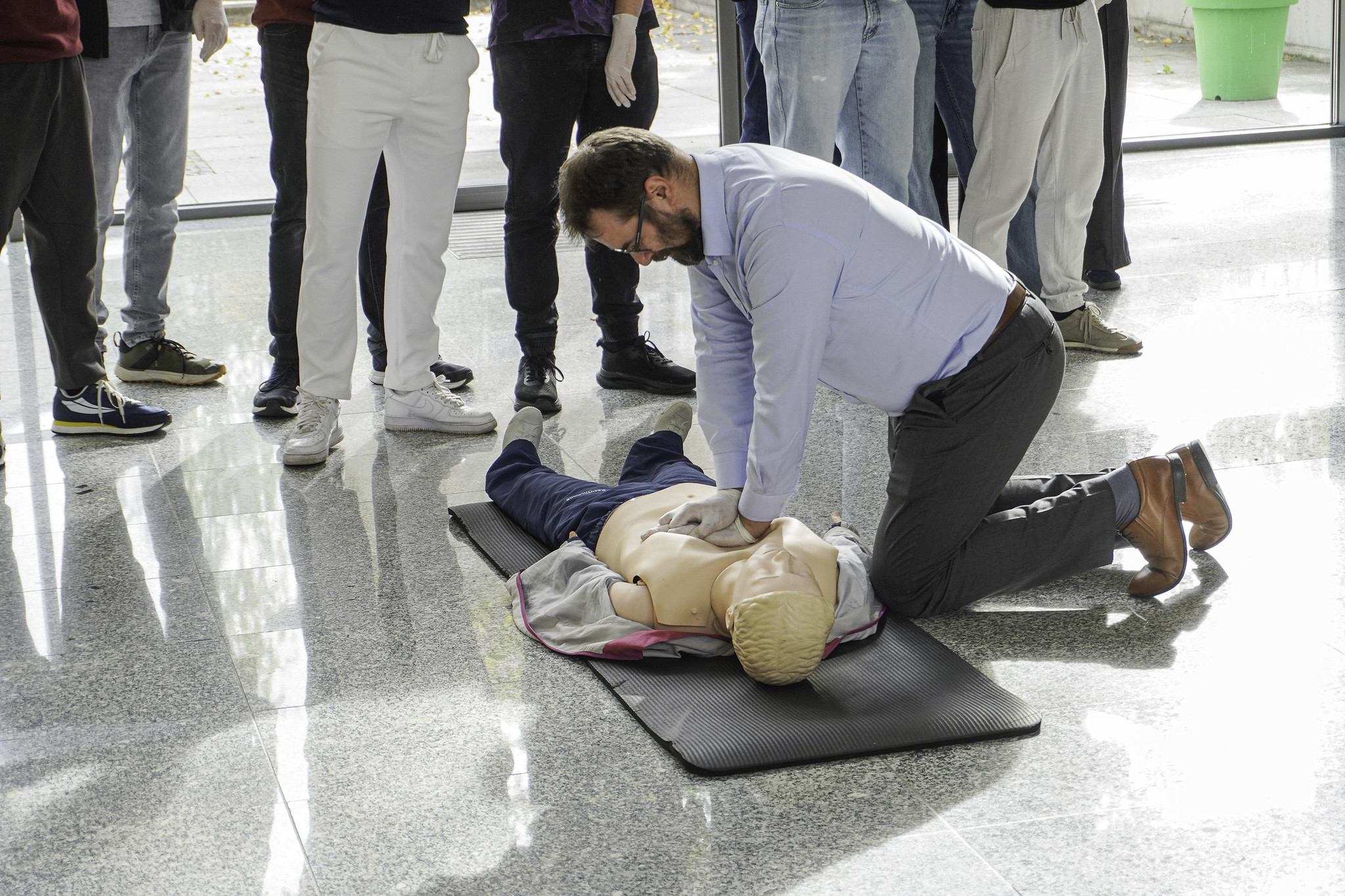
155,379 people from 1,443 institutions broke the world record for simultaneous Cardiopulmonary Resuscitation (CPR). Among them were employees and students of the UO Faculty of Medicine.
The event was organised by the Great Orchestra of Christmas Charity. People across Poland performed cardiopulmonary resuscitation on mannequins on 16 October 2025 – from 12:00 to 12:30, as part of the European Restart a Heart day initiative. The aim was to popularise first aid training and, at the same time, to set a new world record.
At the University of Opole, it was the Student Research Group of the Emergency Medicine and Medical Simulation which prepared six mannequins in the main hall of the Collegium Medicum and invited students and staff members to join the event. Participants in this group resuscitation took turns every minute.
‘We were hoping for a modest turnout of thirty-odd people, but many more came. I am glad we joined, because this is a very important initiative,’ emphasised Mateusz Mijalski, a medical student and member of the Emergency Medicine and Medical Simulation Student Research Group. ‘CPR is a critical intervention, which often depends on us, ordinary people. Before the ambulance arrives, before the patient is taken to the hospital emergency room, to the doctors, to the entire team, we must give them a chance.’
The nationwide result of 155,379 people turned out to be a new world record. For students and staff of the UO Faculty of Medicine, participation in this event was not only an opportunity to test their skills and techniques, but above all a lesson in how to take responsibility for the lives of others
A total of 932,839 people have participated in all nine editions of the event, which has been held since 2013. It was open to any institution, organisation or establishment.